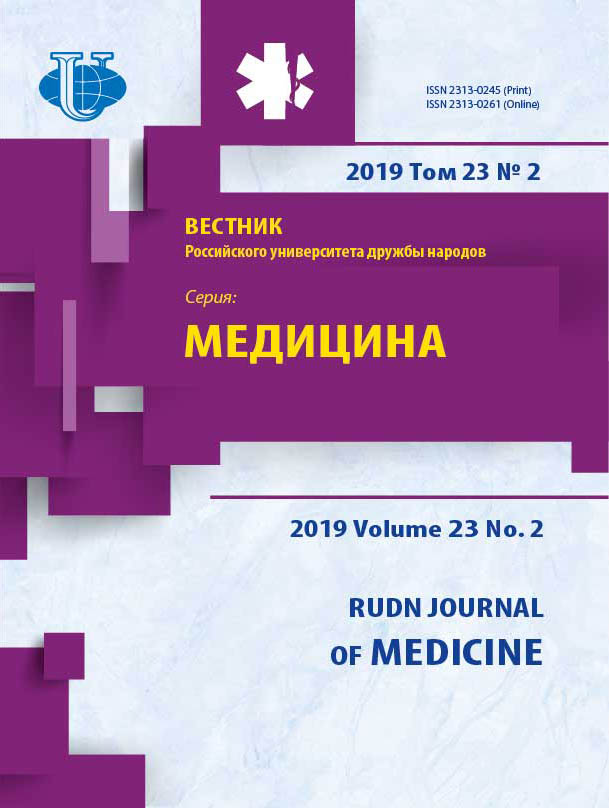CRITICAL FREQUENCY OF FLICKER MERGING AND VISUAL POTENTIALS UNDER COMPUTER LOAD
- Authors: Akhmadeev R.R.1, Timerbulatov I.F.1,2, Koshelev D.I.3, Evtushenko E.M.1,2, Timerbulatova M.F.1,2
-
Affiliations:
- State autonomic public health care institution Republican Clinical Center of Psychotherapy
- Bashkir State Medical University
- Russian eye and plastic surgery center
- Issue: Vol 23, No 2 (2019)
- Pages: 178-186
- Section: OPHTHALMOLOGY
- URL: https://journals.rudn.ru/medicine/article/view/21358
- DOI: https://doi.org/10.22363/2313-0245-2019-23-2-178-186
Cite item
Full Text
Abstract
The urgency of the development and improvement of methods for studying the functional state of users of computer technology is growing in parallel with the growth of their negative impact on the main targets - visual and neuropsychic functions. Therefore, the aim of the study was to study the processes of perception of rhythmic light incentives and induced electrical activity of the visual cortex during a computer load. The study was conducted with the participation of clinically healthy students ( n = 182), who determined the critical fusion frequency of flashes and recorded rhythmic cortical evoked visual potentials during a computer-assisted visual load. To assess the nature and duration of use of computer students, as well as determining the presence and severity of computer dependency, a survey was conducted. Various types of perception of light flashes and changes in the rhythm assimilation reaction under the influence of a computer load are revealed. The data are discussed taking into account the rhythmic processes of the brain. A conclusion is drawn about the weakened, stable and strengthened types of response of oscillatory neural mechanisms to computer visual loads.
About the authors
R. R. Akhmadeev
State autonomic public health care institution Republican Clinical Center of Psychotherapy
Author for correspondence.
Email: evtushenko_67@inbox.ru
Ufa, Russia
I. F. Timerbulatov
State autonomic public health care institution Republican Clinical Center of Psychotherapy; Bashkir State Medical University
Email: evtushenko_67@inbox.ru
Ufa, Russia
D. I. Koshelev
Russian eye and plastic surgery center
Email: evtushenko_67@inbox.ru
Ufa, Russia
E. M. Evtushenko
State autonomic public health care institution Republican Clinical Center of Psychotherapy; Bashkir State Medical University
Email: evtushenko_67@inbox.ru
Ufa, Russia
M. F. Timerbulatova
State autonomic public health care institution Republican Clinical Center of Psychotherapy; Bashkir State Medical University
Email: evtushenko_67@inbox.ru
Ufa, Russia
References
- Basar E., Basar-Eroglu C., Karakas S., Schurman M. Gamma, alpha, delta, and theta oscillations govern cognitive processes. International Journal of Psychophysiology. 2001. Vol. 39. P. 241-248.
- Uusberg A., [et al.] EEG alpha and cortical inhibition in affective attention. International Journal of Psychophysiology. 2013. Vol. 89, № 1. P. 26-36. doi: 10.1016/ j.ijpsycho.2013.04.020.
- Klimesch W. Alpha-band oscillations, attention, and controlled access to stored information. Trends in cognitive sciences. 2012. Vol. 16, № 12. P. 606-617. doi: 10.1016/ j.tics.2012.10.007.
- Rosell D.R. and Siever L. J., 2015. The neurobiology of aggression and violence. CNS Spectrums / First View Article / May 2015. P. 1-26.
- Staudigl T., Hanslmayr S. Theta oscillations at encoding mediate the context-dependent nature of human episodic memory. Current Biology. 2013. Vol. 23, № 12. P. 1101-1106. doi: 10.1016/j.cub.2013.04.074.
- Yatsenko M.V., Kaygorodova N.Z. Individual'nye osobennosti ustoychivykh i neustoychivykh parametrov EEG v kontekste ikh vzaimosvyazi s pokazatelyami umstvennoy rabotosposobnosti. Psikholog. 2017. № 2. S. 9-18. doi: 10.7256/2409-8701.2017.2.22372. URL: http://e-notabene.ru/psp/article_22372.html.
- Han D.H., Bolo N., Daniels M.A., Arenella L., Lyoo I.K., Renshaw P.F. (2011) Brain activity and desire for Internet video game play. Compr Psychiatry 52(1):88-95.
- Rosenfield M. Computer vision syndrome: a review of ocular causes and potential treatments. Ophthalmic Physiol Opt. 2011 Sep;31(5):502-15. doi: 10.1111/j.
- Minyaeva N.R., Medvedev D.S. Vysokochastotnaya ostsillyatornaya aktivnost' mozga cheloveka pri vospriyatii figur c sub"ektivnymi konturami. Inzhenernyy vestnik Dona. № 4 (2014) V| ivdon.ni/m/magazine/archive/ n4y2014/2697.
- Bastiaansen Marcel C.M., Marieke van der Linden, Mariken ter Keurs, Ton Dijkstra and Peter Hagoort. Theta Responses Are Involved in Lexcal Semantic Retrieval during Language Processing. Journal of Cognitive Neuroscience. Vol. 17. Issue 3. March 2005. P. 530-541.
- Buzsaki G., Draguhn A. (2004) Neuronal oscillations in cortical networks. Science 304:1926-1929.
- Carmel D., Lavie N., Rees G. Conscious awareness of flicker in humans involves frontal and parietal cortex. Curr. Biol. 2006;16:907-911.
- Duzel E., Neufang M., Heinze H.J. (2005) The oscillatory dynamics of recognition memory and its relationship to event-related responses. Cereb Cortex 15:1992-2002.
- Hsieh L.-T., Ranganath C. Frontal midline theta oscillations during working memory maintenance and episodic encoding and retrieval. Neuroimage. 2014. Vol. 85. P. 721-729. doi: 10.1016/j.neuroimage.2013.08.003.
- Bollimunta A., [et al.] Neuronal Mechanisms and Attentional Modulation of Corticothalamic Alpha Oscillations. The Journal of Neuroscience. 2011. Vol. 31, № 13. P. 4935-4943; doi: 10.1523/JNEUROSCI.5580-10.2011.
- Golubtsov K.V., Kuman I.G., Kheylo T.S., Shigina N.A., Trunov V.G., Aydu E.A.-I., Bykova T.A., Sofronov P.D., Ryabtseva A.A. Mel'kayushchiy svet v diagnostike i lechenii patologicheskikh protsessov zritel'noy sistemy cheloveka. Institut problem peredachi informatsii RAN, Moskva, Russia, 2003.
- Sidorenko E.V. Metody matematicheskoy obrabotki v psikhologii. SPb.: OOO «Rech», 2007.
- Akhmadeev R.R., Koshelev D.I., Timerkhanov R.I., Enikeev D.A. Pokazateli khromaticheskoy KChSM pri kratkovremennoy komp'yuternoy zritel'noy nagruzke razlichnogo kharaktera. Meditsinskiy vestnik Bashkortostana, 2014, № 5, S. 92-95.
- Khalfina R.R. Analiz psikhoemotsional'nogo stoyaniya pol'zovateley personal'nymi komp'yuterami pri zritel'nom utomlenii. Sovremennaya psikhologiya: teoriya i praktika: materialy V mezhdunarodnoy nauchno-prakticheskoy konferentsii. M., 2012. S. 137-142.
- Yi Jiang, Ke Zhou & Sheng He. Human visual cortex responds to invisible chromatic flicker. Nature Neuroscience 10, 657-662 (2007) Published online: 1 April 2007. doi: 10.1038/nn1879.
















